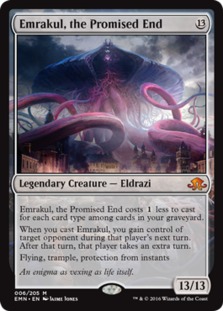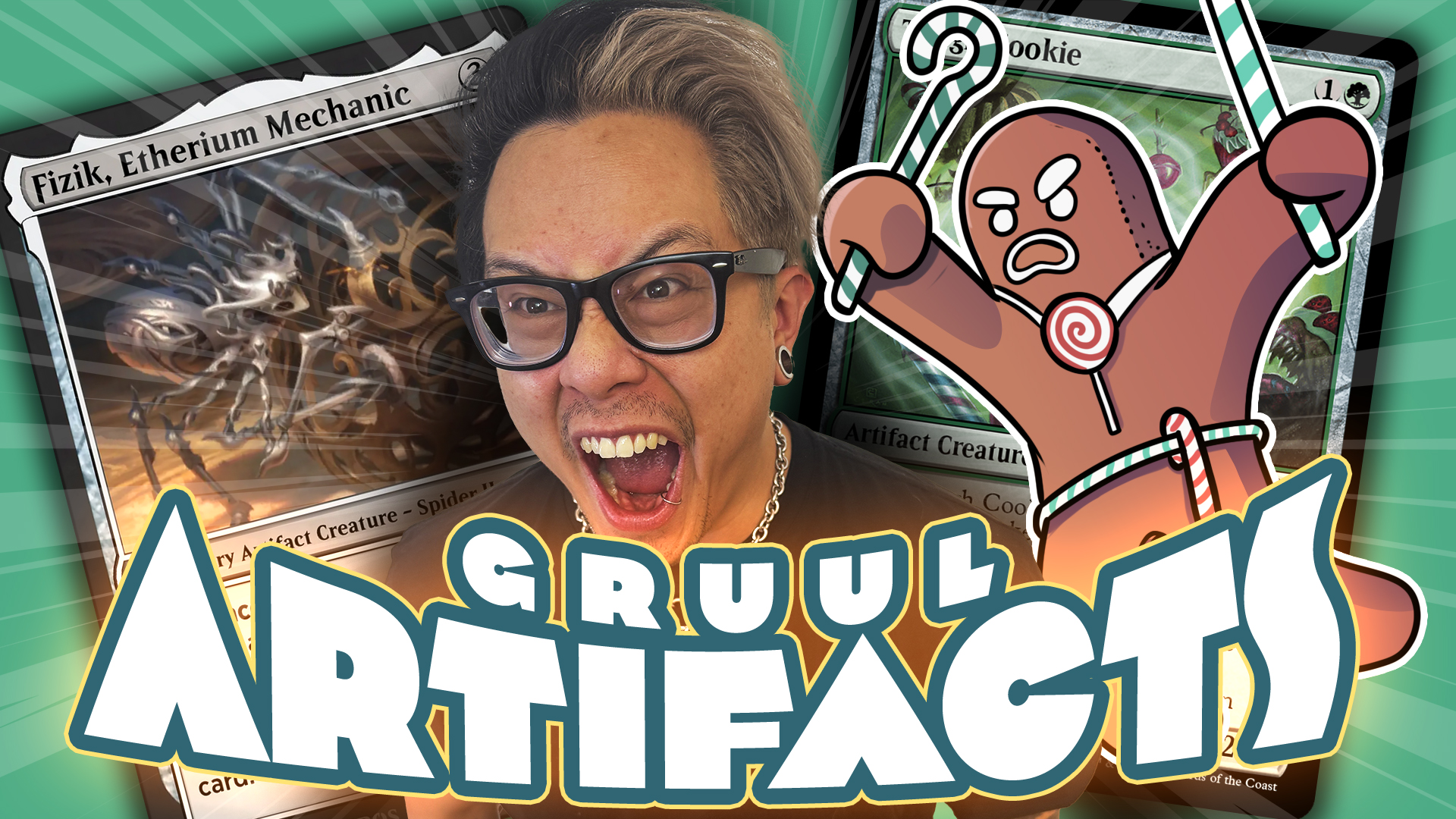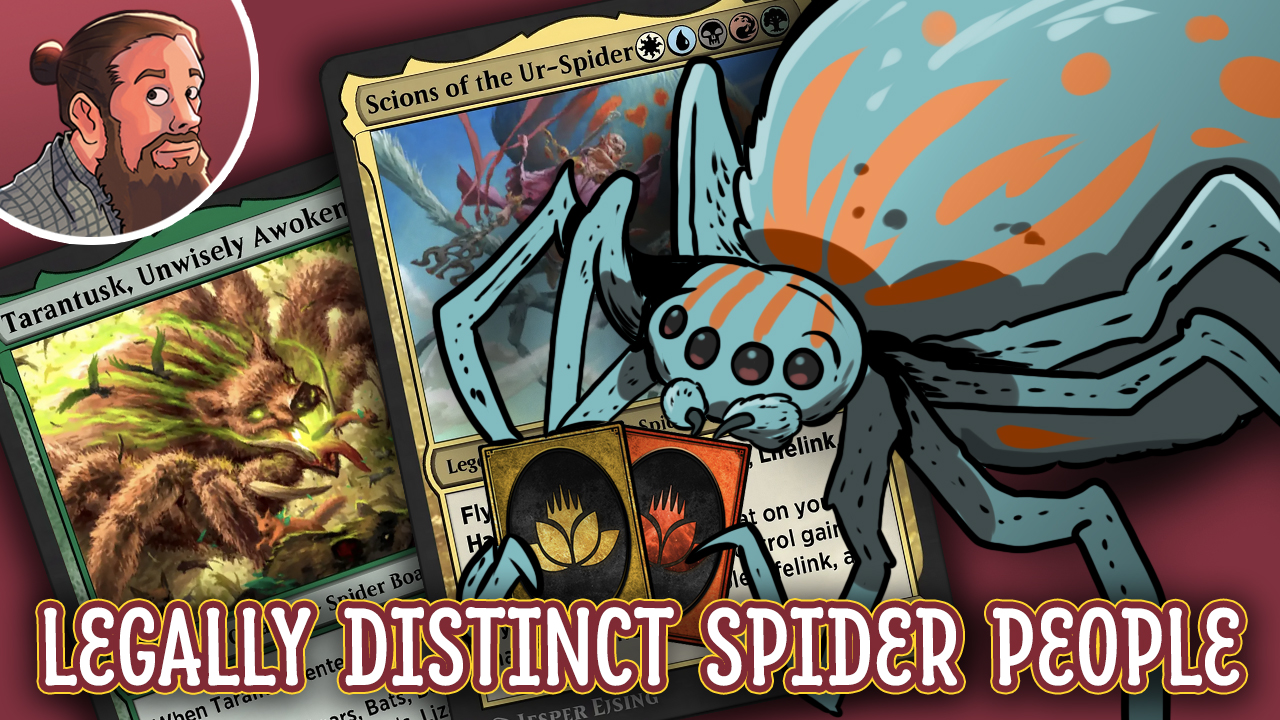Updating Classic Standard Decks for Pioneer: Part 1
This week, by surprise, Wizards announced a brand-new post-Modern format: Pioneer! Unlike some past new formats, this one seems to have a ton of support from both the community (we've gotten a ton of deck-list submissions already) and from Wizards (with Magic Online Leagues and PTQs starting almost immediately and Player's Tour events and Grands Prix coming in early 2020). The format contains cards from Return to Ravnica up until the present (and as new sets are released in Standard, they'll be added as well).
One of the exciting aspects of Pioneer is that since it's smaller than Modern, it theoretically gives decks that were good in Standards past but not quite good enough for Modern another opportunity on the competitive stage. As such, today, we're going to start the process of going through some classic decks from past Standards and getting them ready for the Pioneer format. Today, we'll be covering decks from Return to Ravnica up through Eldritch Moon, and then in part two, we'll look at more recent Standards.
Of course, revisiting old classics is only one way to build Pioneer decks. With a fairly large card pool, new synergies will develop as well, but one of the fun parts of revisiting classics is that if you've been playing Standard over the past five or ten years, you might have a connection to these decks (and maybe even have most of the cards sitting around in your collection somewhere), which will hopefully make them fun and easy to put together. Anyway, let's jump into the decks, starting with a couple from the earliest days of Pioneer in Return to Ravnica–Theros Standard!

We start our exploration of our newest format with a deck built around cards from the oldest set in Pioneer: Return to Ravnica. Back during Return to Ravnica–Theros Standard Mono-Black Devotion was the best deck in the format for most of the year, using a combination of efficient creatures and removal backed by a combo-esque finish of Gray Merchant of Asphodel to drain the opponent out of the game. While the core idea of Mono-Black Devotion remains the same in Pioneer—overload the battlefield with black mana symbols and then Gray Merchant of Asphodel for a ton of drain damage. This being said, the card pool of Pioneer offers a ton of sweet upgrades to the deck, with Gifted Aetherborn being a Modern-playable double-black two-drop, Murderous Rider giving us a Hero's Downfall that also eventually adds mana symbols to the battlefield, and Liliana, the Last Hope being one of the most powerful planeswalkers in the format. Together, these cards represent a big boost of power over the Standard builds of the deck.



Probably the most challenging part of figuring out black in Pioneer is the removal. In a world without fetch lands, Fatal Push is more Disfigure than Doom Blade in Pioneer, which means we're mostly left with solid but not broken two-mana removal in Ultimate Price, Doom Blade, and Cast Down. While it's likely that one of these cards will end up being a very important black removal spell in Pioneer, which one rises to the top will mostly depend on how the format develops and which ends up hitting the highest percentage of targets. Until we have a metagame to brew for, I've mostly defaulted to playing a split of these spells, although I fully expect that once Pioneer has a real metagame, playing more copies of whichever is best, rather than the awkward split, will be the right choice.

While Mono-Black Devotion was the king of Return to Ravnica–Theros Standard, another devotion deck was nipping at its heels for most of the format: Mono-Blue Devotion. In many ways, the plan of Mono-Blue Devotion is the same as Mono-Black Devotion: flood the board with blue mana symbols and then finish the game with a copy of Master of Waves, which will potentially add 10 or 20 power to the battlefield for just four mana, making it (more or less) the Mono-Blue Devotion's version of Gray Merchant of Asphodel.


However, it's arguable that Mono-Blue Devotion got even better Pioneer updates than Mono-Black did. Tempest Djinn is the perfect three-drop for the deck, not only adding three blue mana symbols to the battlefield but also being a massive threat on its own. We also get a copy of Gadwick, the Wizened, and it's possible we might actually want more, depending on how the metagame develops. Thanks to Merfolk Trickster, Harbinger of the Tides, and Brazen Borrower, Pioneer Mono-Blue Devotion actually has a lot of spells that can be played at instant speed, making Gadwick, the Wizened a solid way to slow down by creatures by tapping them. One of the things I really like about Mono-Blue Devotion is it has a ton of tricky ways to deal with cards like Ulamog, the Ceaseless Hunger and Emrakul, the Promised End, which might end up being important.



While our tricky tappers offer a good way to deal with opposing creatures, the combination of Judge's Familiar, Mausoleum Wanderer, and Wizard's Retort helps in the spell-based matchup. The question is just how good these cards will be in the format. The Force Spike Birds are great in formats like Modern, where many decks are built around cheap spells and interaction, but it's possible that Pioneer will look more like Standard, with big midrange creatures bashing into each other. Still, with the metagame being unknown, the Force Spike Birds seem fine for now, and we could always replace them with other one-drops like Spectral Sailor or Siren Stormtamer, depending on how the metagame develops.

While not quite as dominant in Standard as the devotion decks, it's easy to forget that back after Gatecrash was released, Naya Burn was a legitimate top-tier Standard deck. While that list provided inspiration, the Standard build actually only shares a handful of cards with Pioneer Burn, which looks almost but not quite to the power level of Modern Burn (and considering that Pioneer is likely to be way, way slower than Modern, Pioneer Burn might actually be more competitive in its respective format).
In all honesty, this is one of the decks I'm scared of most in Pioneer, especially for the immediate future, when players are going to be trying new things and playing sub-optimal builds. If my goal were to 5-0 a Pioneer league today, this is likely the deck that I'd take to battle.



Like all Burn decks throughout Magic's history, the goal is simple: throw as much damage at the opponent's face as quickly as possible to get their life total down to zero. Creature-wise, we have three Modern all-stars in Eidolon of the Great Revel, Soul-Scar Mage, and Monastery Swiftspear. And while we're missing Lightning Bolt and Lava Spike, our Burn package is fairly solid thanks to Lightning Strike, Boros Charm, and Skewer the Critics to go along with Light Up the Stage for card advantage. It's very possible that Searing Blood should be in the main deck, likely over Magma Jet, but it's really hard to know for sure when brewing blind. If decks with small creatures become popular, make the switch.

Back during Khans of Tarkir Standard, the Siege Rhino–fueled Abzan Midrange was at the top of the format, and it's one of the few decks on our list today that has (at various points in the past) been a legitimate top tier deck in Modern as well. While Pioneer Abzan isn't quite at the level of its Modern counterpart, mostly due to the lack of Tarmogoyf and Liliana of the Veil, it has a lot of extremely powerful cards at basically every point on the curve.



Probably the most controversial card in the list will be Gilded Goose, which gives us an opportunity to talk about the mana dorks of Pioneer. While there are a ton of options at two mana (Sylvan Caryatid, Paradise Druid, Incubation Druid), the options at the one-mana slot are either Llanowar Elves and Elvish Mystic (which only tap for green) or Gilded Goose (assuming you aren't in a graveyard-based deck that can support Deathrite Shaman). While Gilded Goose is most definitely not Birds of Paradise, and only making mana is sometimes annoying, I think the ability to add a mana of any color is important in a three-color deck, maybe even important enough to play Gilded Goose over limited but more consistent options like Llanowar Elves.



Mana dorks aside, the goal of Abzan Midrange is to play as many good cards as possible, with synergy being an afterthought, and in this regard, Pioneer Abzan Midrange hits the mark. Along with solid Modern-playable creatures like Tireless Tracker, Voice of Resurgence, and Scavenging Ooze, we get some strong top-end planeswalkers in Gideon, Ally of Zendikar, Elspeth, Sun's Champion, and Vraska, Golgari Queen. Cards like Ob Nixilis Reignited and Garruk, Cursed Huntsman are in the conversation as well and might be worth a slot over something like Vraska, Golgari Queen, depending on how the Pioneer meta develops. If grindy, midrange value is your thing, Abzan will be a solid Pioneer choice for you.

Toward the end of Khans of Tarkir Standard, after the release of Dragons of Tarkir, Esper Dragons flew to the top of Standard. While I decided to update the list because Dragons are sweet, I'm not actually convinced that Esper Dragons has that much potential in Pioneer. The problem for Esper Dragons is that over the past few years since the deck rotated from Standard, Wizards has printed some of the most powerful planeswalkers of all time in Teferi, Hero of Dominaria, Teferi, Time Raveler, Narset, Parter of Veils, and Gideon, Ally of Zendikar. Every time I look at the Esper Dragons list and see Dragonlord Ojutai and Dragonlord Silumgar, I find myself thinking that the deck would probably be better if we simply removed the Dragons and put powerful planeswalkers in their place.


That said, there is a reason to put Dragons in your Pioneer deck, and that reason is Silumgar's Scorn. The countermagic in Pioneer is fairly weak, and for a control deck like Esper Dragons, having access to literal Counterspell (assuming we have a Dragon in hand or on the battlefield) is a big deal. The question is whether getting Counterspell instead of something like Censor, Dovin's Veto, or Disallow will be enough to make it correct to play Dragonlord Ojutai over Teferi, Hero of Dominaria. My guess is no because the planeswalkers we have gotten recently are so pushed, but I could very well be wrong.

One of the decks I'm personally most excited to play in Pioneer is Abzan Rally. A dominant force in Battle for Zendikar Standard, the deck has been very close to good enough for Modern, although it typically has fallen just a tiny bit short. The idea of the deck is pretty simple: stock the graveyard with Stitcher's Supplier and Satyr Wayfinder, use Rally the Ancestors to return a bunch of random creatures to the battlefield alongside some number of Cruel Celebrants and Zulaport Cutthroats, and then sacrifice our entire board to Cartel Aristocrat or Blood Bairn to drain our opponent out of the game. With a solid draw, it's very possible to kill our opponent on Turn 4, and with an insane nut draw involving Deathrite Shaman mana, we could even get a Turn 3 kill.

Speaking of Deathrite Shaman, it's my pick to be one of the most overrated cards in the Pioneer format. People tend to think of the fact that it is banned in Modern and Legacy and forget that it was somewhere between okay and unplayed while it was in Standard. Deathrite Shaman is an absurdly powerful card in conjunction with fetch lands, but with fetch lands (outside of slow fetches like Evolving Wilds and Fabled Passage) banned in the format, Deathrite Shaman is more of an archetype staple than a format staple. If you're playing a deck that is actively stocking its graveyard (like we are with Abzan Rally), then Deathrite Shaman has the potential to be one of the best cards in your deck, but if you just slot it into a random shell, you'll likely be disappointed by its inconsistency in a fetchless world.



The biggest question for a deck like Abzan Rally is just how much graveyard hate players are going to pack in Pioneer. In Modern, one of the drawbacks of Rally the Ancestors is that you pick up on a ton of incidental hate, as most decks have something like Rest in Peace, Leyline of the Void, or Relic of Progenitus to fight against degenerate graveyard decks like Dredge. It might be that players will view the graveyard as less of a threat in Pioneer and play less hate, which would make it much easier for Rally to be a real deck in the format. On the other hand, if I had to pick one card that will be the most important sideboard card in the Pioneer format, it might be Grafdigger's Cage since it shuts down Collected Company, Aetherworks Marvel (for the most part), and random graveyard strategies, so maybe hoping for little graveyard hate in Pioneer is a bit optimistic. Thankfully, with Assassin's Trophy and Knight of Autumn in the sideboard, we have a ton of ways to deal with any graveyard-hate spells that do hit the battlefield.

While not as dominant as they were in Modern at their peak, Eldrazi was a very real deck in Standard as well after the release of Oath of the Gatewatch. While missing out on Eldrazi Temple means the deck will certainly slower be in Pioneer than it is in Modern, the Eldrazi core remains the same and is still very powerful.



The biggest challenge of building Eldrazi in Pioneer is that since the tribe is mostly colorless, you can theoretically play Eldrazi in basically any one- or two-color combination. While our build is mono-green, it's worth mentioning that black gives you Thoughtseize; blue has Stubborn Denial and additional Eldrazi like Drowner of Hope; white offers Eldrazi Displacer; and red gives you Kozilek's Return and Eldrazi Obligator, so its very possible that after playtesting, another color or combination of colors could be better.



One of the upsides of being in green is that we get good acceleration, with eight one-mana mana dorks in Elvish Mystic and Llanowar Elves. While it will take some effort to make the mana work (having green on Turn 1 and colorless on Turn 2), being able to play Turn 2 Matter Reshaper into Turn 3 Thought-Knot Seer and finally Turn 4 Reality Smasher seems like a decent way to win some games of Pioneer. While the mana dorks do lose some value as the game goes along, they do make good crew members for Smuggler's Copter, and we can always loot away extra copies in the mid- to late game.




Speaking of the mana, Aether Hub probably looks strange in a deck with no energy production, but it is actually perfect for the deck, giving us a way to play Elvish Mystic or Llanowar Elves on Turn 1 and then making colorless mana for our Eldrazi throughout the game. Thanks to Aether Hub, Hashep Oasis, and some Forests, we have a total of 14 untapped green sources for Turn 1, giving us an 86% chance of playing our mana dork on time, while still having 16 colorless sources in our deck for our Eldrazi, and the math is even better when you consider our four copies of Once Upon a Time. Meanwhile, one of the upsides of being a mostly colorless deck is that we get to play some very powerful colorless lands in Scavenger Grounds, Sea Gate Wreckage, Blast Zone, and the full four copies of Mutavault.

Shadows over Innistrad Standard brought us support for a couple of powerful tribal decks, the first of which has developed into one of the better decks in Modern: Humans. While Pioneer Humans can't really go full five-color like the Modern builds thanks to the lack of Cavern of Souls and fetch lands, which does limit its power to some extent, there are so many good Humans in Pioneer that two- or three-color builds should still pack more than enough oomph to win a lot of games.



Our build today is a fairly straightforward Bant Human Company take on the tribe. The combination of Collected Company and Militia Bugler gives us a lot of card advantage for an aggro deck, while Thalia's Lieutenant and Metallic Mimic fill the lord role, pumping our small Humans into more meaningful threats. One card that we really miss from the Modern builds is Champion of the Parish, and while not as powerful, Experiment One can do a fairly good impression, potentially growing into a 3/3 by Turn 3 or bigger with the help of Metallic Mimic and Thalia's Lieutenant.


A couple of Humans specifically might be better in Pioneer than they are in any other format. For the immediate future, some of the most frightening decks in the Pioneer formats are built around cards that were banned in their respective Standard formats, with Aetherworks Marvel and Felidar Guardian (with the help of Saheeli Rai) topping the list). Thalia, Guardian of Thraben and Lavinia, Azorius Renegade give us on-tribe hate cards for two of the (potentially) most powerful and played decks in the format. Thalia, Heretic Cathar beats an infinite board of hasty Felidar Guardians all by itself by making them come into play tapped, while Lavinia, Azorius Renegade counters any big spell that our opponent might try to play for free with the help of Aetherworks Marvel.
One of the things I'm most interested to learn about the Pioneer format is whether decks that were so broken in Standard that they needed to be banned are still broken in the format. When you look at most of the Standard bannings we've had over the past few years, the problem was often that we didn't have good answers or hate cards just as much as it was the power of the banned cards themselves. Pioneer has a pretty impressive list of sideboard options to fight some of the (theoretical) top decks in the format.
- Aetherworks Marvel: Pithing Needle, Sorcerous Spyglass, Lavinia, Azorius Renegade, Assassin's Trophy, Karn, the Great Creator, Abrade, Grafdigger's Cage.
- Felidar Guardian / Saheeli Rai: Pithing Needle, Sorcerous Spyglass, Thalia, Heretic Cathar, Imposing Sovereign, Fry, Authority of the Consuls.
- Emrakul, the Promised End: Leyline of the Void, Scavenger Grounds, Tormod's Crypt, Sentinel Totem, Leyline of Sanctity, Lazotep Plating
- Smuggler's Copter: Abrade, Fatal Push, Karn, the Great Creator, Doom Blade (et al.)

While Humans looks solid, if you want to play a tribal deck with Collected Company, perhaps the best of the bunch is Spirits, which looks a lot like its Modern counterpart. The combination of disruption (Mausoleum Wanderer, Spell Queller, Rattlechains), strong lords (Supreme Phantom and Empyrean Eagle), and card advantage (Spectral Sailor and Collected Company) along with a fast, evasive clock makes Spirits an easy choice for one of the best tribal decks in the Pioneer format.
While technically three colors, one of the upsides of Spirits in Pioneer is that it's really a two-color deck splashing for Collected Company, which means the mana should be a lot better than for many true three-color decks. One of the bigger challenges of building Pioneer decks is figuring out the mana. Without fetch lands to go with shock lands, it actually takes a bit of work (unlike in Modern, where being able to fetch up off-color shock lands can hide a lot of mistakes in mana-base building). So far, my default has been shock lands and the buddy lands / check lands, although the fast lands are also in the conversation as far as Pioneer-playable land cycles. After these three, there's a pretty big drop-off to the other cycles, which mostly come into play tapped. If you're looking for a shortcut to building Pioneer mana bases, probably the easiest thing to do is to think of Pioneer mana as basically the same as Standard mana before rotation. While this does remove fast lands from the equation, you'll still end up with a very solid and functional mana base playing just shock lands and buddy lands / check lands, with some utility lands and basic lands sprinkled in as necessary.

Finally, we have one of the trickier decks to build for Pioneer: Green-Black Delirium. While the idea of GB Delirium is fairly straightforward—play a grindy midrange game but also turbo out Emrakul, the Promised End as quickly as possible by stocking our graveyard with different card types—building the deck is a challenge since we really need a mixture of enchantments, artifacts, instants, sorceries, planeswalkers, and creatures to reduce Emrakul's cost. This is why we have some weird splits like two copies of Once Upon a Time (an instant) and two copies of Traverse the Ulvenwald (a sorcery).


Perhaps the biggest upgrade to the deck is Deathrite Shaman. While not good in most Pioneer shells due to the lack of fetch lands, in a deck featuring Stitcher's Supplier, Grim Flayer, and Field of Ruin, Deathrite Shaman has a chance to shine and offers some extra mana for powering our Emrakul, the Promised End. In theory, we can get Emrakul down to six mana with some lucky self-milling, which means we can be hard casting it as early as Turn 4 or 5 with the help of Deathrite Shaman. And while not quite as good as a Turn 4 Emrakul, the Aeons Torn in Modern, Emrakul, the Promised End's ability to Mindslaver the opponent's next turn is almost as devastating as annihilating six permanents.


While I think that Emrakul, the Promised End could be a defining card in the early days of Pioneer, it's also worth mentioning that unlike when Emrakul was banned in Standard, there are actually very strong graveyard hate options in Pioneer in Leyline of the Void, Tormod's Crypt, and Scavenging Ooze, so there is some risk that we'll get blown out after sideboarding and our Emrakul, the Promised End will cost the full 13 mana, which basically means we'll never cast them. Still, an early Emrakul usually is enough to win a game by itself, which makes the risk worthwhile.
Conclusion
Anyway, that's all for today. In part two of the series, we'll work our way through one of the most broken Standards in recent history in Kaladesh, along with other recent Standard sets. Until then, let us know in the comments what you think of Pioneer. Are you excited about the format? What deck are you looking to play first? As always, leave your thoughts, ideas, opinions, and suggestions, and you can reach me on Twitter @SaffronOlive or at SaffronOlive@MTGGoldfish.com.













